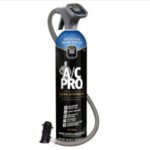It’s a frosty morning, you jump into your car, turn on the heater expecting a warm blast, but are instead greeted by a chilling stream of cold air. This common car problem can be frustrating and uncomfortable, especially during the colder months. If you’re asking “Why Is My Heat Blowing Cold Air In My Car?”, you’re in the right place. Let’s explore the common culprits behind this issue and what you can do about it.
How Your Car Heater Works: A Quick Overview
Most cars use a liquid-cooled engine system. This system circulates a mixture of antifreeze and water (coolant) through the engine to absorb heat produced during operation. While most of the heated coolant is directed to the radiator to cool down, a portion is diverted to the heater core.
The heater core, resembling a small radiator, is located within your car’s dashboard. When you activate your car’s heater, a fan blows air across the heater core. The hot coolant flowing through the heater core warms this air, which is then circulated into your car’s cabin, providing you with warmth. This process explains why your engine needs to run for a bit before the heater starts blowing warm air. However, if you’re consistently getting cold air, there might be an underlying issue. Let’s delve into the common reasons.
Common Reasons for Cold Air From Your Car Heater
Several factors can lead to your car’s heater blowing cold air. Here are some of the most frequent causes:
1. Faulty Thermostat
The thermostat is a crucial component that regulates engine temperature. It’s a valve that opens and closes to control coolant flow. When your engine is cold, the thermostat remains closed, allowing the engine to reach its optimal operating temperature quickly. Once the engine is warm enough, the thermostat opens, allowing coolant to circulate and prevent overheating.
However, if the thermostat is stuck closed, it can lead to engine overheating and potentially affect heater performance indirectly. More commonly, if the thermostat is stuck open, coolant circulates constantly, preventing the engine from reaching the temperature needed to produce heat effectively. This is a likely cause if your temperature gauge takes a long time to rise or doesn’t reach the normal operating range, and your heater blows lukewarm air rather than hot air. Replacing a faulty thermostat is usually a straightforward and affordable repair.
2. Low Coolant Level
Coolant plays a dual role in your car’s engine. It prevents overheating in hot weather and provides heat for your car’s heater in cold weather. Low coolant levels can significantly impact your heater’s performance. If the coolant level is low, there might not be enough hot coolant circulating through the heater core to generate warm air.
A low coolant level can be due to leaks in the system, which need to be addressed promptly to avoid further engine damage. Check your coolant reservoir regularly and top it off if necessary. However, if you notice consistently low levels, it’s essential to inspect for leaks.
3. Air Trapped in the Cooling System
Air pockets can sometimes become trapped within the cooling system, particularly in the heater core, which is often located at a high point in the system. These air bubbles can obstruct the flow of coolant to the heater core, preventing it from heating up properly and resulting in cold air blowing from your vents.
This issue can often be resolved by “bleeding” the cooling system to remove trapped air. This process typically involves running the engine with the radiator cap off (when cool) to allow air bubbles to escape. However, consult your car’s repair manual or a professional for the correct procedure.
4. Clogged Heater Core
The heater core itself can become clogged over time. This clogging can be due to internal corrosion and debris buildup within the coolant passages, or external debris like leaves, lint, and other particles blocking the heater core fins. A clogged heater core restricts coolant flow and reduces its ability to transfer heat to the air.
Signs of a clogged heater core can include:
- Lower than usual coolant levels: A clog can sometimes cause coolant leaks.
- Engine overheating: Reduced coolant flow can lead to engine overheating.
- Fog inside the car: A leaking heater core can cause coolant to leak into the car’s cabin, leading to fogging windows.
- Sweet, fruity smell inside the car: Antifreeze has a distinct sweet smell. This smell inside the car can indicate a coolant leak from the heater core.
Depending on the cause of the clog, flushing the cooling system or cleaning the heater core fins might resolve the issue. In some cases, heater core replacement might be necessary.
5. Coolant Leaks
Coolant leaks, as mentioned earlier, can lead to low coolant levels and subsequently, heating problems. Leaks can occur in various parts of the cooling system, including the radiator, hoses, water pump, and even the heater core itself.
Regularly inspect these components for signs of leaks, such as puddles under your car, visible coolant drips, or the sweet smell of antifreeze. Addressing coolant leaks promptly is crucial not only for your heater but also for preventing serious engine damage due to overheating.
Conclusion
A car heater blowing cold air can be a significant discomfort during cold weather. By understanding the common causes outlined above, you can begin to diagnose the potential problem. While some issues like low coolant levels can be addressed relatively easily, others, such as a clogged heater core or thermostat issues, might require professional attention.
If you’re experiencing cold air from your car’s heater, it’s recommended to have your vehicle inspected by a qualified mechanic. They can accurately diagnose the root cause and perform the necessary repairs to restore warmth to your car’s cabin, ensuring comfortable and safe driving during colder days.
